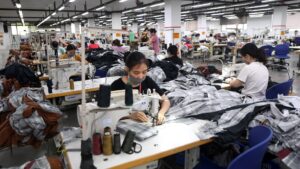The Future of Manufacturing: Navigating Tariff Challenges in Vietnam
Welcome to the Extreme Investor Network blog, where we delve into the latest business trends and economic developments impacting investors and businesses alike. Today, we’ll explore the rising uncertainties surrounding manufacturing in Vietnam, particularly in light of recent tariff announcements from the U.S. government.
A Shift in Manufacturing Landscape
For years, Vietnam has become a favored alternative for brands and retailers moving their production out of China. The shift was primarily driven by the desire to evade the tumultuous U.S.-China trade tensions. Major companies, ranging from clothing brands to furniture manufacturers, have significantly ramped up their investments in Vietnamese factories, hoping to mitigate risks and maintain a steady flow of goods to the American market. According to the Office of the U.S. Trade Representative, imports from Vietnam reached a remarkable $136.6 billion in 2024, marking a 19% increase from the previous year.
However, the landscape is quickly changing. Recently, President Trump’s administration announced a dramatic 46% tariff on imports from Vietnam, set to take effect on April 9. This sudden escalation means that companies relying heavily on Vietnamese production might have to confront steep cost increases or pass these additional expenses onto consumers, adding to the economic pressure in a climate already fraught with inflation.
Impact on Key Industries
The sectors most vulnerable to these new tariffs include footwear, apparel, furniture, and toys. Let’s break down how some prominent players are reacting:
-
Footwear Giants: Brands like Nike and Adidas have substantial operations in Vietnam, with about 25%-50% of their footwear produced there. This means the new tariffs represent a significant financial burden for them and could jeopardize their market positions. With Nike already forecasting double-digit sales declines and its stock dropping 6% post-announcement, it reflects heightened investor concern.
-
Furniture Manufacturers: Recent statistics indicate that over 26% of U.S. furniture imports now come from Vietnam. Companies such as Wayfair have begun diversifying their sourcing strategies to encompass not just Vietnam but also Cambodia and Thailand. However, even they are bracing for price adjustments due to the tariffs.
- Toy Makers: Toy brands, such as Hasbro and Mattel, have relied heavily on Vietnamese factories to meet their production needs. GFT Group, a leading manufacturer in Southeast Asia, operates extensively in Vietnam and could be forced to reevaluate its pricing strategies in response to the tariffs. The buzz among toy manufacturers suggests that they are actively negotiating contracts to help mitigate the looming cost pressures.
What’s Next for Manufacturers?
As companies across various sectors brace for the ramifications of these tariffs, the pressing question remains: Where do they go from here? The current climate compels manufacturers to adopt a more flexible and agile approach to their supply chains.
-
Diversification of Production: As seen with brands like American Eagle Outfitters and VF Corporation, the focus is shifting towards reducing reliance on any single country. Companies are exploring alternative sourcing options in countries like Indonesia, the Philippines, and Cambodia, while aiming to reduce production in both China and Vietnam to lower overall exposure.
- Investing in New Supply Chains: The trend towards building new supply chain relationships is gaining momentum. Companies are not just rushing to new countries; they are carefully assessing where their products can be produced most cost-effectively while meeting quality standards. Feedback from executives suggests the need for patience and strategic planning rather than knee-jerk reactions to policy changes.
Conclusion: Finding a Pathing Forward
At the Extreme Investor Network, we recognize the complexities of these shifting dynamics. While tariffs pose significant challenges, they also create unique opportunities for adaptability and innovation. Businesses that prioritize flexibility in sourcing and embrace alternative markets may not only survive but thrive in this new economic landscape.
As we continue to monitor the ripple effects of these developments, stay tuned for further insights and analysis on how the business landscape is changing. Together, let’s navigate these challenges and identify pathways towards growth and success.
This is why Extreme Investor Network remains your go-to source for understanding critical market shifts and discovering unique investment opportunities. Join us in staying ahead of the curve!

